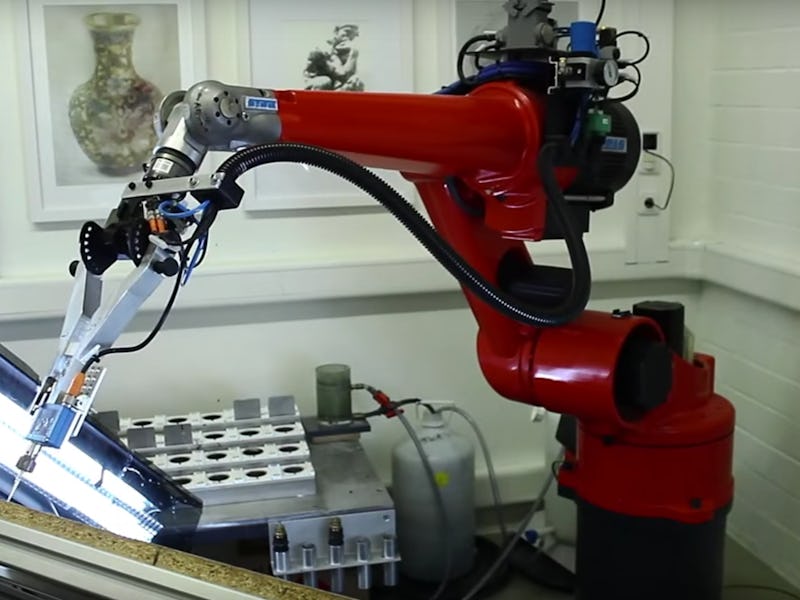See the Impressionist and Self-Portrait Paintings of the First RobotArt Contest
Voila!

What does a robot’s self portrait look like? That’s just one of the questions raised by the provocative, first-ever RobotArt contest that featured 25 robots producing work in styles ranging from literalism to impressionism with even a hint of abstraction. And with submissions finalized, the first host of candidates are proving themselves capable of holding their own in the snootiest of downtown boutique galleries.
In part a response to critics who argue that a robot painter can only ever be a pure reflection of its programmer, the contest encouraged submissions from robot artists that were able to add a unique flourish to their canvasses. Public voting on the best artwork in the content has already opened, and winners are due to be selected May 15. The contest has examples of all different kinds of robo-art, so jump in and help your favorite win the title. The champion artist wins $100,000, courtesy of Andrew Conru, founder of FriendFinder (and, yes, AdultFriendFinder), to donate to schools or charities that support artistic technologies.
One early frontrunner in the race to claim artistic greatness, e-David, produces impressionistic portraits and paintings from the tip of its long, robotic arm. The metallic menace can paint in 24 colors and uses its own sense of light to generate images, separating itself somewhat from the dictates of its coding.
There’s also Picassnake, which evokes more of Jackson Pollock than Pablo Picasso, with its gutting and floppy approach to artwork. The robot reads a QR code then paints along to music that helps it to determine exactly what to create. This musical variable allows Picassnake to produce unique work every time. But without any particularly beautiful creations and a largely random approach to painting, the final creation comes to us as a little dull.
A team at Carnegie Mellon created a robot that works in concert with a human to generate synthesis paintings. The robot guides the paintbrush but ultimate control remains with the human who can override the machine commands simply on account of their greater strength.
Another candidate also blurs the lines of robotic and human painting. The Crowd Painter robot, as its name suggests, crowdsources the plans for its paintings. A programmer may choose a single template for the work, but once the floodgates open, control over the robot becomes remarkably democratic. In demonstrations, while the template’s outline never disappears completely, it does come under a barrage of trolling, including, of course, swastikas, dicks, and 9/11 conspiracy theories.
The designers even shared video of a cyber attack on their platform where the hackers managed to bypass the interface to send instructions directly to the robot. Posting phrases like “My art is not vandalism” and “Stop suppressing art,” the hackers force the machine painter to produce a political screed either directed at the robot itself or the rest of the world that views this new artistic movement as illegitimate.
As for self-portraits, the only entrant in the contest that has tried it was Van Arman, whose robot converted an image of him into a painting.
As is clear from this contest, though, the young movement is evolving, and with some serious financial backing, has found both investment and inspiration. We may not have a Picasso or a Pollack in the running this year, but those guys were so 20th Century, anyhow.